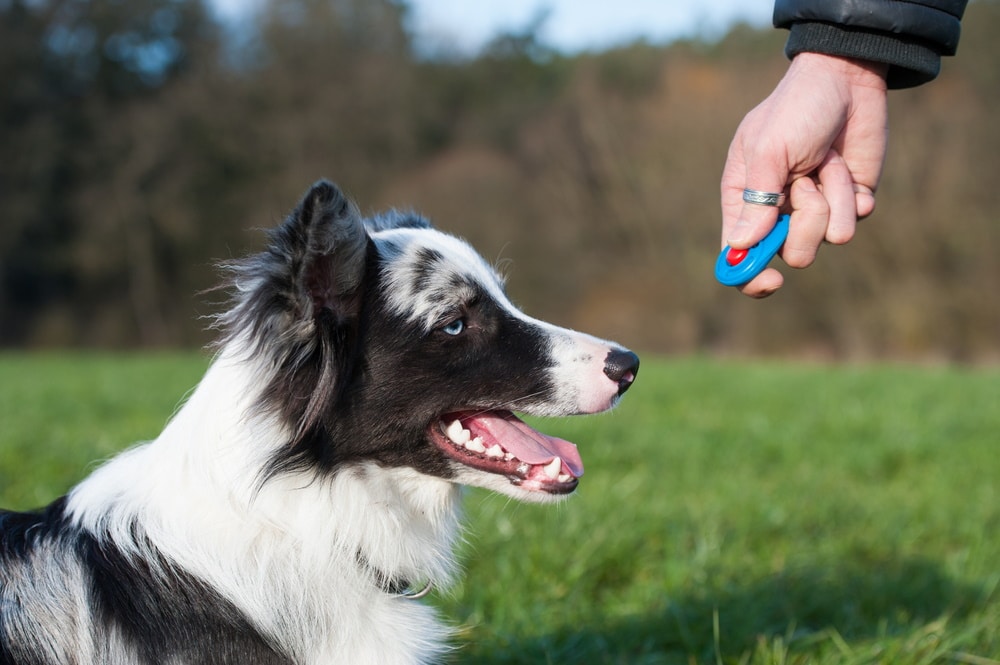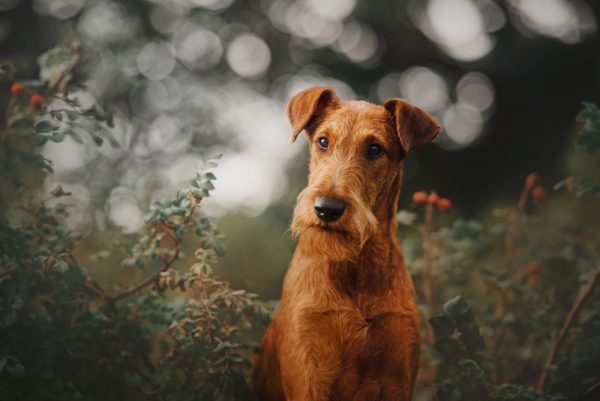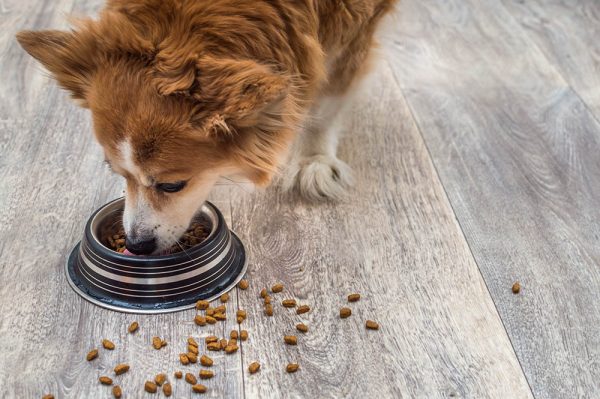Clicker training was developed in the 1940s by scientist B.F. Skinner during his experiments on pigeon behavior. It was an accidental discovery and led to research on how we can use specific sound markers to shape behaviors. Since then, it has become both a popular training method and a divisive one. It divided traditional trainers from what are now called “new school” trainers. To date, there are some people who think that clicker training is outdated or cruel. Others swear by clicker training and claim that it is a harmless and effective way to train dogs. This raises an obvious question: Is clicker training bad?
The answer is no. Clicker training is not bad by itself. In fact, a clicker is just a tool to increase communication during standard positive reinforcement training. However, just because clicker training isn’t bad doesn’t mean that it is amazing or that it will work for every dog. There are a number of dog trainers who refuse to use clicker training for various reasons.
Here is everything you need to know about clicker training, including the science behind it, its advantages, and the reasons that some trainers think that it’s bad.

What Is Clicker Training?
Clicker training is a simple method that adds an audio cue (clicking) alongside positive reinforcement in order to hammer home training methods. Some people claim that clicker training is easier and faster than regular verbal training. Clicker training works on the principle of operant conditioning, which modifies behaviors by introducing a reinforcer or positive outcome. The only difference between clicker training and standard positive reinforcement training is the addition of the clicking sound in between the command and the treat.
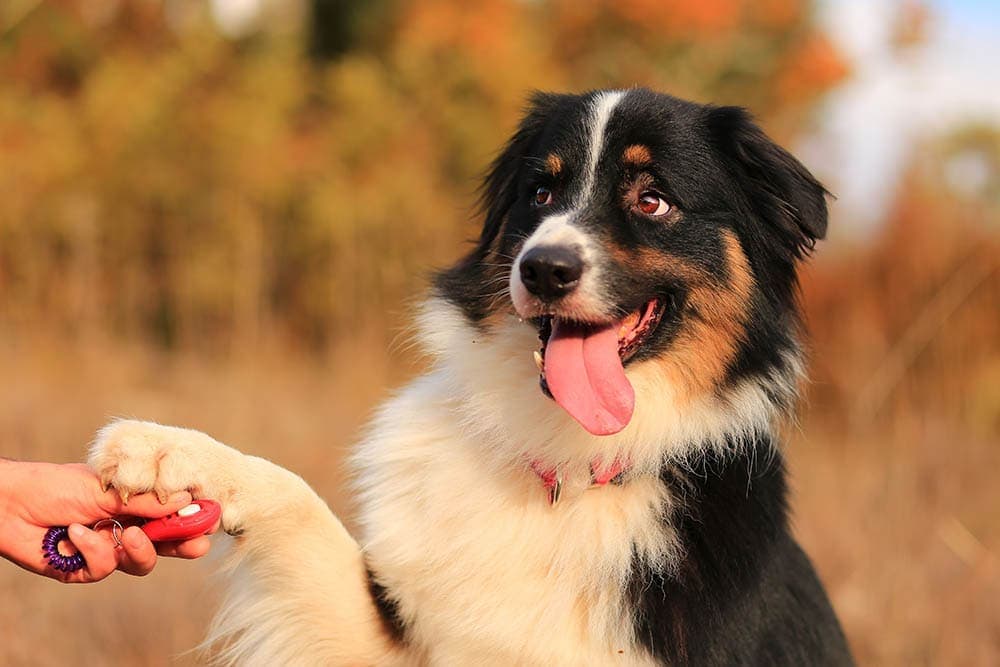
How to Use Clicker Training
Clicker training is popular because it is simple. All you need to start clicker training is a goal, a clicker, a bag of training treats, and a dog. Clicker training is just adding a sharp audio cue to signal positive reinforcement. You teach your dog a command and say the command verbally, and when the dog obeys, you click the clicker and give them a treat. Rinse and repeat.
Clicker training is simple and effective, but it will not work for every dog. Some trainers avoid using it because they argue that it may not be effective for certain cases or scenarios.

What Dogs Can Benefit from Clicker Training?
A large number of dogs can benefit from clicker training. In fact, some behaviorists claim that nearly any mammal can learn via clicker training. However, not all dogs will respond well to it. For example, since clicker training is based on the clicker’s sounds, a deaf dog will not react to it. However, they can learn with a visual marker instead.
- Clicker training is based on positive reinforcement training.
- It enables the trainer to mark a specific behavior in a timely manner.
- It’s easy to adapt to almost any dog.
- It enables the trainer to shape their dog’s behaviors.
- Deaf dogs cannot be trained with this tool.
- Too many treats can lead to obesity (the trainer needs to learn to use other reinforcers).
- The timing of the trainer is crucial and the process requires precision.

Frequently Asked Questions
When Should You Stop Clicker Training?
Obviously, you can’t always have a clicker in your hand whenever you are with your dog. Clicker training is a tool that can help you teach your dog many behaviors and tricks, but eventually, you should phase out the clicker. Once your dog knows what behaviors (or tricks) are required of them and can do them on command, you shouldn’t need the clicker anymore.
The power of the clicker entails its precision and distinctive sound. You can let your dog know the exact second that they are performing the expected behavior or taking a step closer to the goal. But once the behavior is trained and the dog consistently responds to your signal or command, you no longer need the clicker. You can replace it with a word like, “good,” as a way to let your dog know that they did what was expected and that they will receive a positive consequence, which can be a treat, a belly rub, or an opportunity to play with a ball. Use whatever you know is valuable and enjoyable for your dog as a reinforcer for their good behavior.
Many people misunderstand how to use a clicker to train a dog. They think that it should always be used in conjunction with a voice command as a signal, but that is not what this type of training is about. The clicker is a tool to help us better communicate with our dogs during the training process. However, since such a strong and positive history of reinforcement is developed via the sound of the clicker, many dogs find it incredibly motivating, and their owners choose to continue using it as an everyday tool.
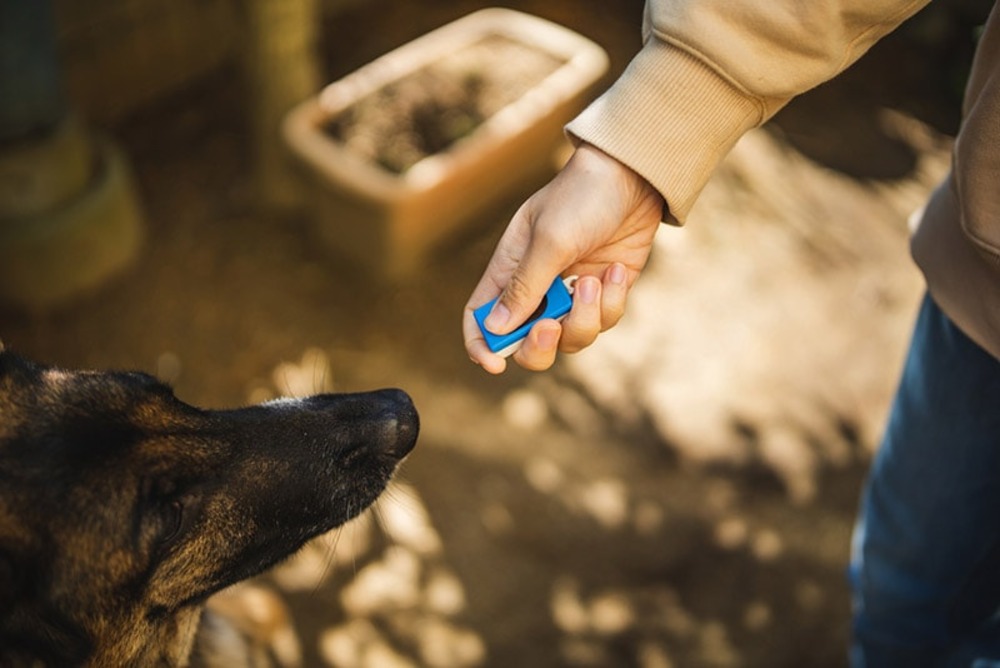
Why Is Clicker Training Bad?
There is nothing inherently wrong with clicker training; it is not inhumane. It works off of a tried-and-true training method for dogs: positive reinforcement. In fact, clicker training and positive reinforcement were developed in a scientific setting, when B.F. Skinner was studying animal behavior using Pavlov’s operant conditioning theories.
So, why do some trainers believe that clicker training is bad?
There are different dog training schools and methods, and trainers with such backgrounds sometimes argue that there are many limitations to clicker training, especially when dogs misbehave. They believe that clicker-trained dogs might not respond in triggering situations in the real world. Also, this training method teaches a pup how to behave but is not based on the dog following their leader’s command. One of the strongest arguments against clicker training is the level of obedience achieved in a professionally trained working guard dog versus a clicker-trained dog.
Furthermore, certain behaviors—for example, aggression—from dogs to owners will require a “correction,” a.k.a. a punishment, in order for it to be extinguished as soon as possible. Clicker training only marks behavior based on positive reinforcement, so there is no use of punishments with this training method.
Another thing to consider is that giving a dog too many treats can cause them to ingest excess calories, which can lead to weight gain and obesity. Dogs should receive no more than 10% maximum of their daily calories from treats. Some overzealous trainers and owners will use far too many treats and throw off their dog’s overall nutrition.
Clicker training is not bad, per se, but it is not as universally beloved as some people make it out to be. It is a powerful training method that can help you teach your dog behaviors and tricks, but it might not be the best approach when dealing with certain behavioral issues or challenging scenarios.

Final Thoughts
Clicker training isn’t inherently bad; in fact, this training method works great for most dogs. However, there are traditional trainers who think that clicker training is not enough to deal with certain challenges that they see with some dogs. That said, clicker training has been shown to be effective for most dogs, and it can be a wonderful way to teach and learn from your pup while communicating to them what you expect.
Clicker training might not work for certain complex cases or scenarios that trigger a dog’s instinct and therefore, require extreme obedience. Some opponents say that it is better to forgo the clicker and focus solely on verbal affirmation with treats. This can also work, as the method is the same, if less precise and lacking an easy-to-differentiate marker.
A clicker is a tool that works quite well to shape behavior when combined with positive reinforcement. It’s not the only way, of course, nor is it ideal for every purpose or dog, but it is an effective and fun method that does not harm a dog.
Featured Image Credit: Dora Zett, Shutterstock

